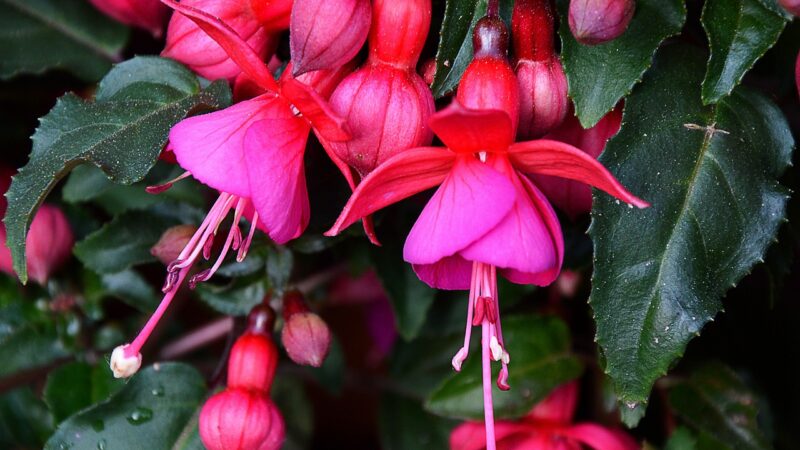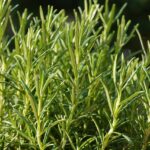The care of fuchsia

Caring for fuchsias is a deeply rewarding endeavor for any dedicated gardener, offering a spectacular display of pendulous, jewel-like flowers throughout the growing season. These elegant plants, however, demand a nuanced approach to their cultivation, as their health and vitality are contingent upon a precise balance of environmental factors. Understanding their specific needs for light, water, and nutrition is the foundational step towards achieving a lush, floriferous specimen. The commitment to providing this tailored care will be repaid tenfold with a profusion of blooms that are a true highlight in any garden setting, from hanging baskets to container arrangements.
Proper care begins with selecting an appropriate location, which is perhaps the most critical decision in fuchsia cultivation. These plants thrive in conditions that mimic their native, cool, and moist habitats, generally preferring a position that receives bright, indirect sunlight. A spot with morning sun and afternoon shade is often ideal, as this protects the delicate foliage and flowers from the harsh, scorching rays of the midday sun. Furthermore, ensuring good air circulation around the plant can help to prevent the development of common fungal diseases that fuchsias are susceptible to in stagnant, humid conditions.
The potting medium and container choice also play a pivotal role in the overall health of the plant. A well-draining, yet moisture-retentive, potting mix is essential to prevent waterlogged roots, which can quickly lead to root rot. Incorporating organic matter such as compost or well-rotted manure can enhance the soil structure and provide a slow release of essential nutrients. The container itself should have adequate drainage holes; terracotta pots are an excellent choice as their porous nature allows for better air and moisture exchange, helping to regulate the soil environment more effectively.
Throughout the growing season, from spring to autumn, a consistent routine of maintenance is necessary to keep the fuchsia in peak condition. This includes regular deadheading, which is the practice of removing spent blooms before they can set seed. This process encourages the plant to redirect its energy into producing more flowers, thereby extending the blooming period significantly. Additionally, periodically inspecting the plant for any signs of pests or diseases allows for early intervention, which is crucial for preventing a minor issue from escalating into a major infestation or infection.
Understanding the fuchsia life cycle
The life cycle of a fuchsia is intrinsically linked to the changing seasons, and a gardener’s care routine must adapt accordingly to support the plant through its different phases. In the spring, as temperatures rise and daylight hours increase, the plant emerges from its winter dormancy, signaling the start of a new growth period. This is the time to begin increasing watering and to introduce a regular feeding schedule to fuel the development of new leaves and stems. The initial flush of growth is vigorous, and it lays the groundwork for the season’s floral display.
More articles on this topic
As summer arrives, the fuchsia enters its peak blooming phase, a period where it expends a tremendous amount of energy. The care during this time should focus on maintaining optimal moisture levels and providing consistent nutrition to sustain the continuous production of flowers. It is also a period of vulnerability, as high temperatures can induce heat stress, causing the plant to wilt and drop its buds. Providing adequate shade during the hottest part of the day and ensuring the soil does not dry out are critical practices for navigating the challenges of summer.
With the onset of autumn, the plant’s growth naturally begins to slow down as temperatures cool and light levels diminish. This is a transitional period where the focus of care shifts from promoting blooms to preparing the plant for its winter rest. Watering should be gradually reduced, and fertilization should be tapered off and eventually stopped completely. This allows the new growth to harden off, making the plant more resilient to the colder temperatures ahead and better prepared for its dormant phase.
Winter is the period of dormancy for a fuchsia, a crucial resting phase that is essential for its long-term health and vitality. During this time, the plant requires minimal care, with watering reduced to just enough to prevent the root ball from completely drying out. The ideal overwintering location is a cool, dark, and frost-free environment, such as a garage, shed, or unheated basement. This period of rest allows the plant to conserve its energy, ready to burst forth with new growth when spring returns, thus completing its annual cycle.
Optimizing soil and potting conditions
The foundation of a healthy fuchsia plant lies quite literally in its roots, making the choice of soil and potting conditions a matter of paramount importance. Fuchsias demand a growing medium that strikes a delicate balance between moisture retention and excellent drainage. A soil that is too dense and heavy will retain excessive water, leading to an anaerobic environment that promotes root rot, one of the most common and fatal issues for these plants. Conversely, a mix that drains too quickly will not hold enough moisture to keep the plant hydrated, particularly during warmer weather.
More articles on this topic
To create the ideal potting mix, one should start with a high-quality, peat-based commercial compost. This can then be amended to improve its structure and nutrient profile. Adding perlite or coarse horticultural grit is an effective way to enhance drainage and aeration, ensuring that the roots have access to the oxygen they need to thrive. Furthermore, incorporating well-decomposed organic matter, such as leaf mould or composted bark, will not only improve moisture retention but also provide a gentle, slow release of vital nutrients over time, supplementing regular feeding.
The size and type of the container are also critical variables in the equation of fuchsia care. A pot that is too large for the plant’s root system can hold an excessive volume of soil, which may stay wet for prolonged periods and increase the risk of root rot. It is generally advisable to pot up incrementally, moving the plant to a container that is only slightly larger than its current one. Terracotta pots are often favoured by experienced growers as their porous walls allow for evaporation, which helps to cool the root zone and prevents the soil from becoming waterlogged.
Finally, proper potting technique is essential to ensure the plant establishes itself successfully. When transferring a fuchsia to a new pot, one should carefully tease out any circling roots at the bottom of the root ball to encourage them to grow outwards into the new soil. The plant should be set at the same depth it was in its original container, as planting it too deep can lead to stem rot. After potting, a thorough watering is necessary to settle the soil around the roots and eliminate any air pockets, providing a stable and nurturing environment for the plant to begin its new phase of growth.
The importance of air circulation
Good air circulation is a frequently overlooked, yet fundamentally important, aspect of successful fuchsia cultivation. Proper airflow around the plant plays a crucial role in disease prevention, particularly in mitigating the risk of fungal infections that thrive in stagnant, humid conditions. When air is allowed to move freely around the leaves and stems, it helps to keep the foliage dry, making it a less hospitable environment for fungal spores, such as those that cause botrytis (grey mould) and fuchsia rust, to germinate and spread.
Achieving adequate air circulation begins with appropriate spacing between plants. Whether in a greenhouse, on a patio, or in a garden bed, overcrowding fuchsias can create pockets of still, damp air that are ideal for pathogens. Providing enough space for each plant to grow without its foliage overlapping significantly with its neighbours is a simple but highly effective preventative measure. This practice not only improves plant health but also allows the individual beauty of each specimen to be fully appreciated without being obscured.
The design of the growing area can also be optimized to promote better airflow. In a greenhouse setting, the use of fans can create gentle, continuous air movement, while strategically placed vents can be opened to regulate temperature and humidity. For plants grown outdoors in containers or hanging baskets, selecting a location that is not completely sheltered from gentle breezes can be beneficial. However, it is important to protect them from strong, gusting winds, which can damage the delicate stems and flowers.
Pruning is another key practice that contributes to improved air circulation within the plant’s own canopy. By selectively removing some of the inner branches and thinning out dense areas of foliage, a more open structure is created. This allows air to penetrate the center of the plant, reducing humidity levels within the canopy and ensuring that all leaves are able to dry more quickly after watering or rainfall. This not only helps in disease prevention but also allows for better light penetration, leading to more even growth and flowering throughout the plant.
Deadheading for continuous blooming
The practice of deadheading, or the removal of spent flowers, is a simple yet vital horticultural technique that can dramatically enhance the floral display of a fuchsia. The primary biological purpose of a flower is to produce seeds for reproduction. Once a flower has been pollinated and begins to fade, the plant diverts a significant amount of its energy into developing the resulting seed pod or berry. By removing the fading bloom before this process begins, the gardener effectively tricks the plant into producing more flowers in a renewed attempt to reproduce.
The process of deadheading is straightforward but requires a gentle touch. It is best to inspect the plant every few days, looking for flowers that have lost their vibrancy, started to wilt, or dropped their petals. To remove the spent bloom, one should pinch or snip it off at the point where its small stem joins the main branch. It is important to remove the entire flower structure, including the swollen ovary at its base, as this is what will develop into the seed pod. Leaving this part behind will not halt the seed production process.
Consistent and diligent deadheading throughout the growing season from spring until autumn will result in a fuchsia that is perpetually covered in a profusion of blossoms. This regular attention not only promotes a more aesthetically pleasing plant but also contributes to its overall vigor, as energy is channeled into producing new growth and more flowers rather than being wasted on seed development. This is particularly important for fuchsias grown in hanging baskets and containers, where a continuous and cascading floral display is the desired effect.
Beyond the immediate benefit of encouraging more blooms, the regular practice of deadheading also provides an opportunity for close inspection of the plant. This allows the gardener to monitor for any early signs of pest infestations or diseases, such as aphids hiding on new growth or the tell-tale pustules of fuchsia rust on the undersides of leaves. Early detection is critical for effective management, making the simple task of deadheading a valuable component of an integrated pest and disease management strategy, ensuring the long-term health and beauty of the plant.
Recognizing and responding to plant stress
Even with the most attentive care, fuchsias can sometimes exhibit signs of stress, which are the plant’s way of communicating that its environmental conditions are not ideal. One of the most common indicators of stress is wilting, where the leaves and stems lose their turgidity and begin to droop. While this is often a sign of underwatering, it can paradoxically also be caused by overwatering, which leads to root rot and impairs the root’s ability to absorb water. It is crucial to check the soil moisture before watering a wilting plant to correctly diagnose the cause.
Leaf discoloration is another key signal of plant stress. Yellowing leaves, a condition known as chlorosis, can indicate a variety of issues, including nutrient deficiencies, particularly of nitrogen or iron. It can also be a symptom of improper pH levels in the soil or, again, a sign of overwatering. Conversely, leaves that develop brown, crispy edges are typically suffering from underwatering, low humidity, or exposure to excessive direct sunlight, which causes leaf scorch. Observing the specific pattern of discoloration can provide valuable clues to the underlying problem.
Bud drop is a particularly disheartening sign of stress for any fuchsia grower, where the plant sheds its unopened flower buds before they have a chance to bloom. This is often a response to a sudden change in environmental conditions, such as a sharp fluctuation in temperature, a change in location, or inconsistent watering. Fuchsias are sensitive to their environment, and maintaining stable and consistent conditions is key to preventing this issue and ensuring a successful flowering period.
Responding effectively to these stress signals requires careful observation and a process of elimination to identify the root cause. Rather than making drastic changes, it is often best to make small, incremental adjustments to the plant’s care routine. For example, if overwatering is suspected, one should allow the soil to dry out more between waterings and ensure the pot has adequate drainage. If nutrient deficiency is the likely culprit, a balanced, water-soluble fertilizer can be applied. By learning to read the plant’s signals and responding thoughtfully, a gardener can correct course and restore their fuchsia to a state of health and vigor.
Seasonal adjustments in fuchsia care
Adapting the care routine to the changing seasons is a hallmark of a skilled fuchsia grower, as the plant’s needs are not static throughout the year. The transition from the cool, gentle conditions of spring to the intense heat of summer requires a significant shift in watering practices. As temperatures rise and the plant is in full, vigorous growth, its water requirements will increase dramatically. It is essential to monitor soil moisture daily, and sometimes even twice daily for plants in smaller pots or hanging baskets, to prevent the soil from drying out and causing the plant to wilt under heat stress.
The intensity and duration of sunlight also change with the seasons, necessitating adjustments in the plant’s location. While a position with some morning sun may be perfect in spring, the same spot could expose the plant to scorching afternoon rays in the height of summer. It may be necessary to move container-grown fuchsias to a location that offers more dappled shade during the hottest months or to erect temporary shading, such as shade cloth, to protect them. This proactive approach prevents leaf scorch and helps the plant conserve moisture.
Fertilization strategies must also evolve with the seasons. During the peak growing and flowering period of late spring and summer, fuchsias are heavy feeders and benefit from a regular supply of nutrients, typically a balanced liquid fertilizer applied every one to two weeks. However, as autumn approaches and the plant’s growth begins to slow in preparation for dormancy, feeding should be gradually reduced and then stopped altogether. Continuing to fertilize late into the season can encourage soft, new growth that is vulnerable to cold damage.
The arrival of autumn signals the time to begin preparing the fuchsia for its winter rest. This involves not only ceasing fertilization but also gradually reducing the frequency of watering. For tender varieties that need to be brought indoors, this is also the time to prune them back, clean off any dead or diseased foliage, and treat them for any lingering pests. These seasonal adjustments are crucial for guiding the plant through its natural life cycle, ensuring it has the resources and resilience to survive the winter and return with renewed vigor the following spring.


















